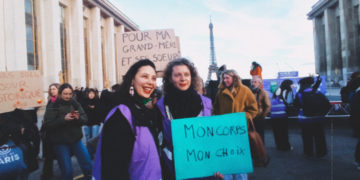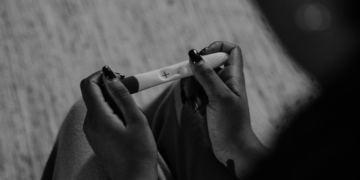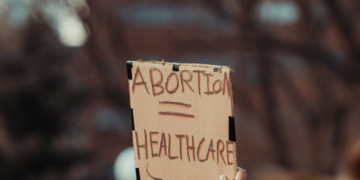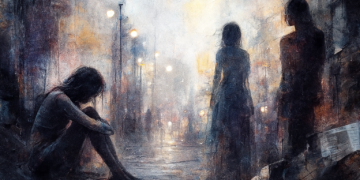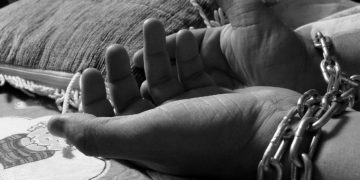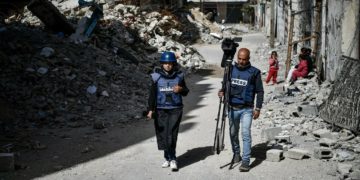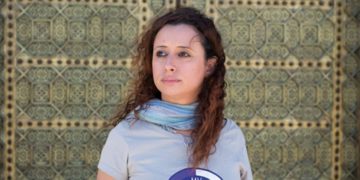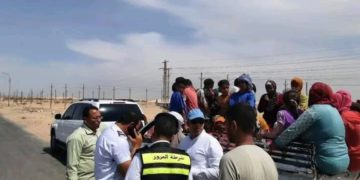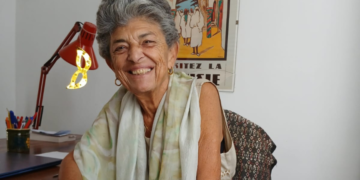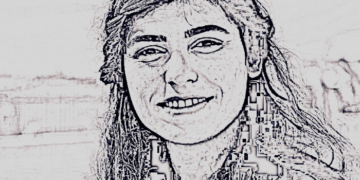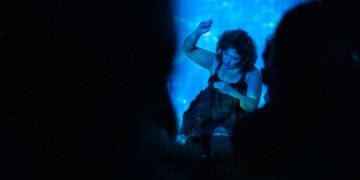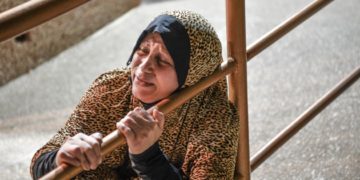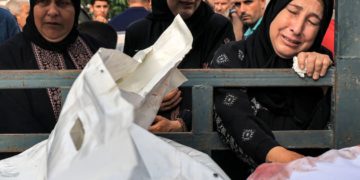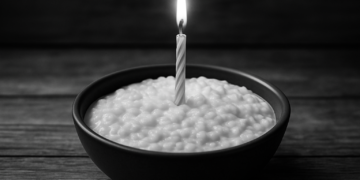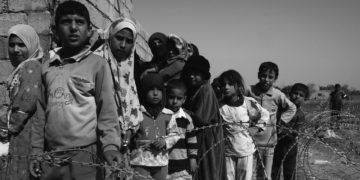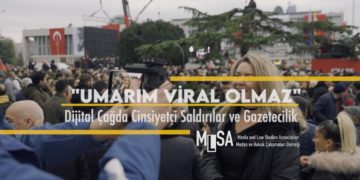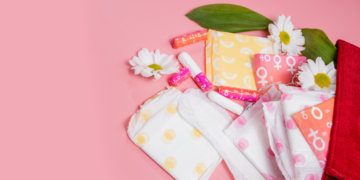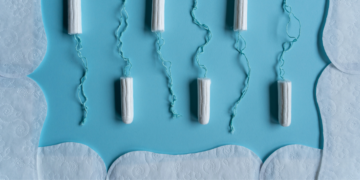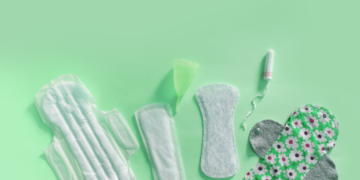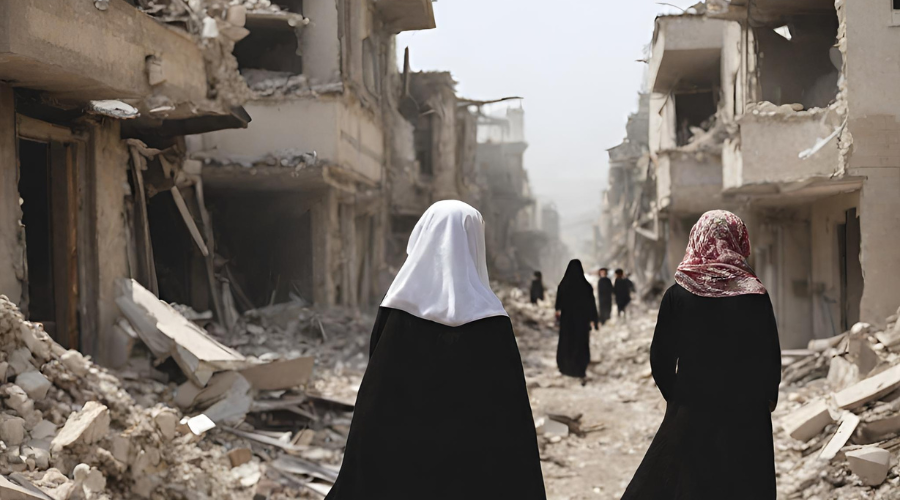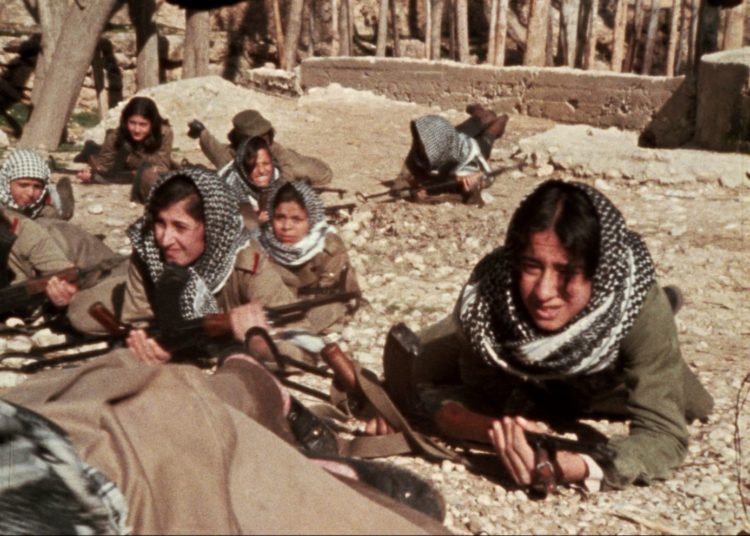This post is also available in: العربية (Arabic)
Wafaa, a health projects manager, follows the train of her thought back to the day of the 2023 Kahramanmaraş earthquake that hit large parts of southern Turkey and northern Syria. “After I went to sleep, at about 3 in the morning, something happened that I didn’t immediately understand. I could hear the sounds of birds and animals screaming. We rushed out of the house. It was very cold outside, and there was snow everywhere. There was no place to shelter. Through it all, I was only afraid for my son, Aram.”
“It was a very difficult night, but we managed to make it to our relatives’ house the next morning. It was such a rough night; we still hadn’t really processed what had happened. Fortunately for me, I was on maternity leave, so I had some time to get back on my feet.”
Wafaa tells us about how she resorted to writing, singing in a choir, and doing sports to try to forget about what happened on the night of the earthquake. “Despite everything, the idea of having another child still terrifies me,” she laments.
Waad also lived through this earthquake, and she still bears the bitter scars to date, as the events of the night affected her body and her reproductive health. The scars from her Caesarean section to deliver her second son had not yet healed when disaster hit. Waad says, “My wound was still fresh, and the pain was at its most intense. I couldn’t walk yet when the earthquake struck; my newborn was two days old. My husband shouted at me to grab the baby and follow him, and I carried my newborn as my wound actively bled. We went down to the street, where there was snow and it was raining, and we stayed outside in the cold until we found a car in which we stayed for four days. My wound kept getting more and more infected, and I had swelling—it was toxic. I could not stop shaking for days after the earthquake. The terror I felt for my newborn and my daughter still haunts me. I am still undergoing hormonal treatment because the bleeding led to difficult gynecological complications; I was in the postpartum period at the time.”
“I haven’t survived it yet.”
A year after the event, Manal Kheir from Latakia tells us about how she experienced the earthquake. “I haven’t survived it yet,” she said to me, tears running down her face. “I’m one of 200,000 people the media did not even mention. Not even as a number, an event. It’s like we were discarded, abandoned by nature and the government and all its major institutions. Not one of them paid us any attention. Some of us were able to take refuge in shelters, but some of us did not find luck anywhere. We had to pick up the pieces ourselves. We stayed in a school, and my children and I really suffered from how dirty it was. The three months I spent in the shelter were not easy. My daughter had just reached puberty, and it was really difficult to be in such dirty bathrooms and not have any access to sanitary pads. We had to use non-sterile fabrics, and both me and my daughter got infections that we are still suffering from to this day.”
Jacqueline, who worked as a volunteer throughout the disaster event, recalls, “Despite how hard we worked to accommodate all those who were displaced by the earthquake in shelters—and there were hundreds of volunteers—many families were not able to find anywhere to go because there were such few shelters (about 40). So some went to their relatives’ houses, but others stayed in the ruins of their homes. And as for the schools that were turned into shelters, we tried very hard, but there were so little resources. There were not enough bathrooms, and there wasn’t enough aid for the massive number of people who had been made homeless. Especially as there were elderly people, chronically ill people, pregnant and breastfeeding women, and, most difficult of all, women who had recently given birth and who needed special care. We did the best we could to meet people’s needs.”
Jacqueline confirmed that her volunteer field work really showed her the various additional problems women suffer from in such situations, such as the lack of separate bathrooms, sanitary products, washing facilities, and maternal health facilities. The lack of security, privacy, and any specific aid.
Everyone in these centers, the men, women, and children, were all using the same facilities. So women suffered from not having anywhere private to change their sanitary pads (if they could even find any), shower, or wash and disinfect clothing. This made the situation they were in even more difficult, having to deal with this on top of having lived through disaster and been made homeless.
Infections, premature births, and miscarriages
Gynecologist Sherine Jamal confirms having seen “pregnant women, postpartum women, and breastfeeding women who had to start drinking less water so that they wouldn’t have to use the shared bathrooms in the shelter centers. Not only were they shared, but access to them wasn’t easy, and they were crowded and unclean. There were too few of them.”
“Because of all of this, many women developed gynecological infections, and fetuses and newborns were underweight. They had poor nutrition because of too little milk, whether they were getting it from breastfeeding or not. There were also many premature births and miscarriages because women were afraid, because of the lack of necessary facilities.”
In addition to the earthquake and the disaster left in its wake, Syria was already conflict-stricken and suffering from poverty and destitution and violence against women, children, and society as a whole. This all exacerbated the earthquake repercussions that the population had to endure, especially the most vulnerable among them, women included.
Official numbers
In Syria, about 1.5 million women impacted by the earthquake are of childbearing age. United Nations Population Fund (UNFPA) mobile teams in Syria supplied kits of sanitary products and medicine to shelters in cities affected by the earthquake, but that was not enough to cover the sheer amount of urgent needs.
A life force
Despite the frustration and fear, survivors’ stories need to be told. Among them is Najat, a social worker who managed to turn her pain into hope for others. After having lost her child and the baby she was carrying during the earthquake, she and her two remaining sons approached children who were left on the street, those the earthquake had turned into orphans. She supported 10 children for many months, as Najat, despite her pain, was a life force for these children who were in regular contact with her. She helped them and offered them whatever support she could, and she saved them from homelessness and death.
